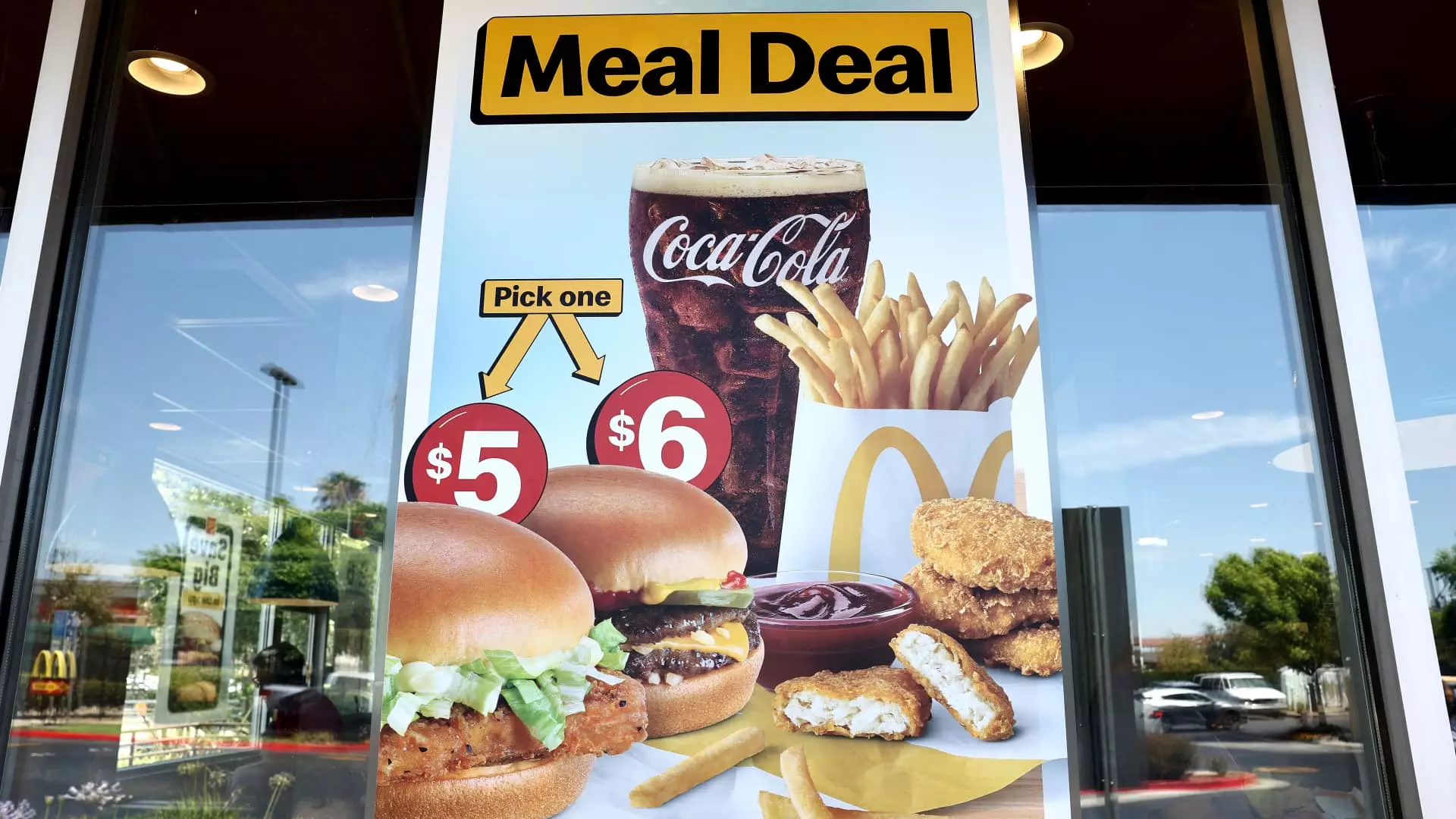In a world where consumers are continually looking for the best value, fast-food chains have had to adapt to meet the needs of their budget-conscious customers. Over the years, many restaurant companies have seen a shift in consumer behavior, with more people opting to cut back on their fast-food spending due to rising menu prices. The $5 footlong deal that Subway once offered, which was popular with customers, proved to be unsustainable in the long run as it eroded profits and led to other issues for the brand. This cautionary tale highlights the challenges that fast-food chains face when trying to attract customers with discounted meal deals.
Despite the struggles that some fast-food chains have faced with their $5 meal deals, many others are turning to value meals to drive traffic and boost sales growth. Chains like McDonald’s, Taco Bell, Burger King, and Wendy’s have all introduced or revived meal deals with a $5 price tag in the hopes of attracting customers back to their locations. While these promotions have led to an increase in foot traffic, the impact on overall sales remains uncertain. Investors are wary that the discounts may not be enough to sustain profitability in the long term.
Franchisees, who are tasked with running the day-to-day operations of fast-food chains, often push back against discounts that hurt their profits. With more power to resist parent companies’ deal strategies in recent years, franchisees have become more vocal about their concerns. Large franchisees, backed by private equity money, are taking a stand against unpopular discounts and store renovation plans imposed by their parent companies. McDonald’s franchisees, for example, formed the National Owners Association to challenge the burger giant’s strategies, leading to a revised $5 value meal deal with marketing support from Coca-Cola.
Meeting Customer Demand
In an effort to meet customer demand and drive traffic to their restaurants, fast-food chains are increasingly relying on value meals and discounts. While deals like the $5 meal at McDonald’s have shown positive results in terms of foot traffic, the challenge lies in converting deal-seeking customers into higher-ticket consumers. To prevent discounts from eroding profits and becoming unsustainable, chains must find ways to encourage customers to add on additional items to their orders. The success of these value meals ultimately hinges on their ability to drive sales growth while maintaining profitability for both franchisees and parent companies.
As fast-food chains continue to navigate the challenges of attracting customers in a competitive market, the future of $5 meal deals remains uncertain. While these promotions have proven successful in driving foot traffic and preventing customers from seeking deals elsewhere, the long-term impact on sales growth remains to be seen. Investors, franchisees, and consumers alike are keeping a close eye on how fast-food chains will adapt to changing consumer behavior and evolving market trends. The success of value meals in today’s market may ultimately depend on their ability to strike a balance between driving traffic and maintaining profitability in an increasingly competitive industry.

